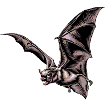Museum, University of Nebraska State

University of Nebraska State Museum: Mammalogy Papers
Document Type
Article
Date of this Version
9-1980
Citation
Prairie Naturalist (September-December 1980) 13(3&4): 65-77.
Abstract
Distributional patterns of mammals in South Dakota are among the most poorly known for any region of similar size in temperate North America. The only state-wide treatment of the group was the mimeographed compilation by Over and Churchill (1945), which consisted mostly of nontechnical anecdotes. Consequently, much of what is known of the distribution of South Dakotan mammals has been derived from localized inventories (Findley 1956a on Clay County ; Andersen and Jones 1971 on Harding County; Turner 1974 on the Black Hills; and Wilhelm et al. 1981 on Lacreek National Wildlife Refuge in Bennett County). These studies, supplemented with information contained in other sources cited in text, enabled preparation of the present preliminary checklist. Publications on the mammalian faunas of adjacent states and the monumental work by Hall (1981) on North America as a whole, together with recent systematic studies of mammalian taxa that occur in South Dakota, all were consulted in estimating the geographic distribution of included species. The reader is directed to the book by Hall and its predecessor (Hall and Kelson, 1959), for distributional details not documented herein.
This list should be regarded as provisional pending completion of additional field work in South Dakota. A checklist is useful in that it brings together in one reference information on the appropriate names and known distribution of taxa of the area covered. This, in tum, frequently stimulates research that eventually renders the checklist out-of-date, and we hope this one suffers that fate.
Eighty-six native species of mammals are here treated. In addition, one species (Oreamnos americanus) introduced on the Black Hills from elsewhere in North America and two murid rodents (Mus musculus and Rattus noroegicus) introduced from the Old World are listed and indicated by an asterisk. Mention is made, too, of several species presently unrecorded from South Dakota that may be found to occur in the state. Ordinal, familial, and generic names appear in currently accepted phylogenetic order, but species in each genus are arranged alphabetically. We follow Jones et al. (1979) in use of vernacular names. Locations of counties mentioned in text are shown in Figure 1.


Comments
Copyright 1980, North Dakota Natural Science Society. Used by permission.